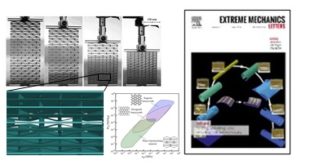Illuminating Health: Biophotonic Sensors Transforming Medicine Through Light
How photons are revolutionizing diagnostics — enabling faster, non-invasive, and intelligent healthcare powered by light.
Biophotonic sensors and systems are rapidly transforming how we approach medical diagnostics, disease detection and biological research. These innovative optical devices offer real‑time, non‑invasive and highly sensitive ways to probe biological systems at the cellular and even molecular level. As the technology matures—driven by advances in artificial intelligence, nanotechnology and materials science—it is actively revolutionizing healthcare, making diagnostics faster, more accurate and more accessible than ever before.
What Are Biophotonic Sensors?
Biophotonic sensors are analytical devices that harness the interaction between light (photons) and biological materials to extract critical information. They work by shining specific wavelengths of light—from lasers, LEDs or even supercontinuum sources—onto tissues, cells or fluid samples and measuring subtle changes in optical properties such as absorption, scattering, fluorescence or refractive index. These changes reveal the presence, concentration or activity of biomolecules in a minimally invasive and often label‑free manner. The key advantage lies in using photons rather than chemical reagents to obtain information, which enables rapid, potentially bedside or point‑of‑care testing.
In particular, methods such as surface‑plasmon resonance (SPR) continue to serve as gold standards for real‑time monitoring of biomolecular interactions (for example antibody‑antigen binding). Meanwhile newer techniques such as localized surface‑plasmon resonance (LSPR) and the use of plasmonic fluorophores are pushing the sensitivity envelope further, leveraging metallic nanoparticles to amplify light–matter interactions in compact, low‑cost formats suited for deployed sensors. Raman spectroscopy, which identifies molecular “fingerprint” signatures by analyzing inelastically scattered light, is another cornerstone technology. The historical weakness of the Raman signal has been overcome through innovations such as surface‑enhanced Raman spectroscopy (SERS), where nanostructured metal surfaces magnify the signal by orders of magnitude. Optical coherence tomography (OCT), often described as “optical ultrasound,” enables high‑resolution, cross‑sectional imaging of tissue micro‑structures. Originally dominant in ophthalmology for retinal imaging, the latest‑generation OCT systems are now finding their way into endoscopic probes for live‑microscopic imaging of gastrointestinal tracts and coronary arteries.
Global Research and Commercial Breakthroughs Reshaping Healthcare
The transition of biophotonics from research labs into clinical and commercial settings is accelerating and global in scope. In the field of early disease detection and oncology, for instance, integrated systems that combine multispectral imaging, photonic biosensing and machine‑learning algorithms are delivering diagnostic accuracy that begins to surpass human pathologists alone. In Europe, large partnership frameworks (such as the Photonics Public Private Partnership) are supporting research that fuses high‑throughput optical sensing with AI‑driven pattern recognition of biopsy samples. On the commercial side, devices such as fluorescence‑spectroscopy systems are now used intra‑operatively to enable surgeons to distinguish cancerous from healthy tissue in real time.
In the realm of point‑of‑care (POC) diagnostics and global health, the push toward decentralized testing is driving a boom in compact, affordable photonic biosensor devices. Here lab‑on‑a‑chip (LOC) photonic biosensors are emerging, often using silicon or polymer‑based optical circuits to perform a complete assay from just a drop of blood or fluid. These platforms are being developed for fast detection of sepsis, malaria, sexually transmitted infections and more, providing results in minutes without the need for a centralized laboratory. The COVID‑19 pandemic catalyzed this trend by accelerating development of photonic sensors capable of rapid, label‑free virus detection.
Wearable and implantable photonic sensors are another frontier. Research teams around the world are developing flexible “skin‑like” patches that use integrated LEDs and photodetectors to continuously monitor biomarkers such as glucose, lactate or alcohol in sweat—completely non‑invasively. Although a truly non‑invasive glucose monitor remains a “holy grail,” commercial efforts are making progress using proprietary spectroscopy techniques and miniaturized optics.
Neurophotonics also holds enormous promise. Techniques such as optogenetics allow scientists to use light both to control and monitor specific neurons, while functional near‑infrared spectroscopy (fNIRS) uses light to map brain activity by measuring changes in blood oxygenation—offering a portable alternative to fMRI for studying brain disorders or cognitive function in more accessible settings.
Challenges and the Road Ahead
Despite the immense promise of biophotonic sensing, several challenges remain on the path to widespread adoption. One key issue concerns biological variability: differences in skin pigmentation, tissue density or optical scattering properties can all affect how light interacts with tissue, potentially introducing bias or reducing accuracy. The path forward lies in building diverse datasets and using advanced AI/ML algorithms to correct for these patient‑specific variables. Scalability and cost are also major hurdles: manufacturing the nanophotonic components required for ultra‑sensitive sensors is often complex and expensive. Bringing sensors into mass production will require adopting manufacturing techniques from the semiconductor industry—such as deep‑UV lithography—and exploring novel cost‑effective materials like graphene or MXenes to enhance performance while reducing expense.
Integration and miniaturization represent another frontier. The full potential of biophotonics lies in integrating sensing, fluid handling (microfluidics) and onboard data processing into a single, user‑friendly device. This convergence of photonics, microfluidics, and edge‑computing is leading to the development of “smart” systems that not only sense but interpret the data and deliver actionable diagnostics autonomously. Regulatory and clinical‑validation paths remain lengthy and expensive. To become ubiquitous, biophotonic sensors must prove reliability, reproducibility and clinical value across diverse patient populations and settings.
Conclusion: A Brighter, Data‑Driven Future Through Light
Biophotonic sensors represent far more than a technological breakthrough; they are catalysing a paradigm shift toward data‑driven, preventive and personalised medicine. By illuminating the intricate molecular and cellular processes within our bodies, these systems provide a window into health and disease that was previously inaccessible. With global research breaking new ground in AI integration, quantum sensing, novel materials and miniaturised optics, biophotonic systems are poised to become as commonplace and indispensable as the stethoscope, empowering a healthier future for all.
 International Defense Security & Technology Your trusted Source for News, Research and Analysis
International Defense Security & Technology Your trusted Source for News, Research and Analysis

